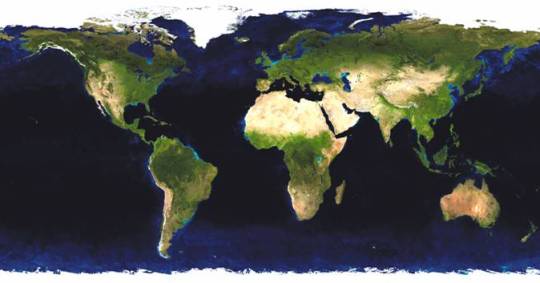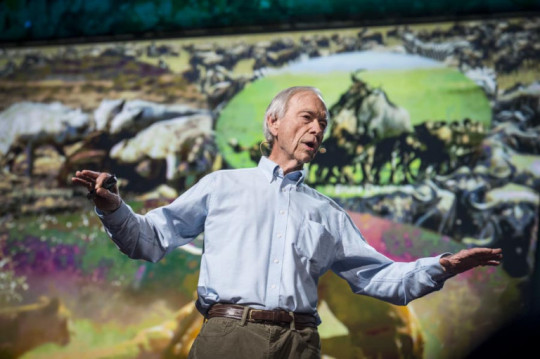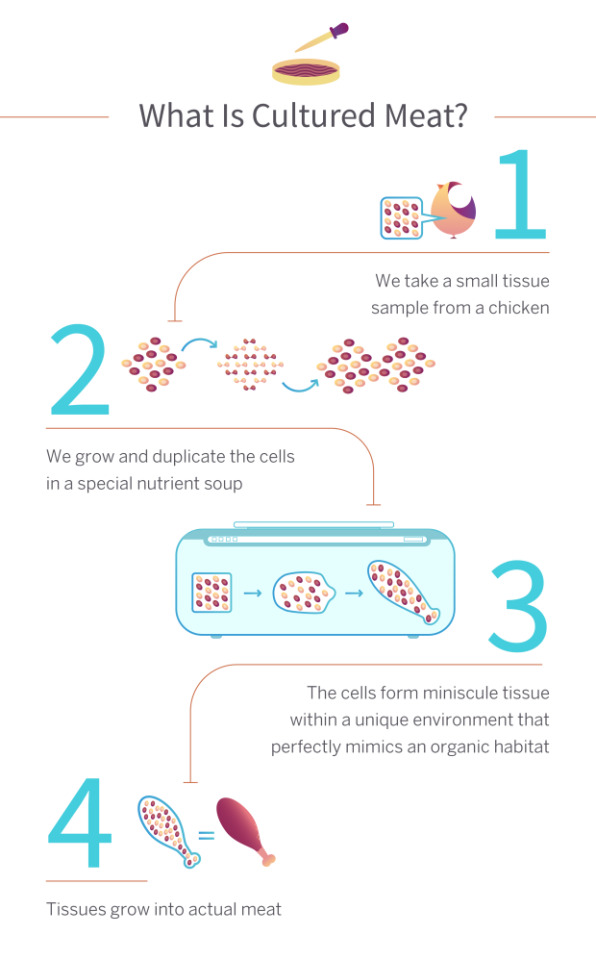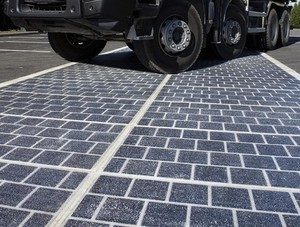I lost my RedMass3 blog, so here's a new one! Come here for my ramblings about games, science and similar awful content.
Don't wanna be here? Send us removal request.
Text
Desertification: a global problem.
Although far away from home, desertification is a massive global environmental problem and the consequences stretch much further beyond the prospect of more sand where it shouldn’t be.
An old working title for this piece was ‘Desertification: Dessertifications less popular cousin’ and although I haven’t used that title I just wanted to make it clear that there is no need to make that play on words yourselves. Thank you.
Desertification is a process of land degradation in dryland ecosystems. Deserts do occur naturally but are demonstrably being spread today and historically have been spread through human activity. The general definition of a desert is as area that has an annual water deficit. This is to say and equal or greater amount of water is lost through evaporation than is gained via rainfall.
The majority of these regions have 2 long seasons, one being wet and cold and the other being warm and dry. At a smaller level a lot of these regions are kept stable and protected by specialised plants, usually with very long roots. When these plants are disrupted or removed, there is nothing to stop the land from being eroded.
This concept will seem very alien to most of us in the west with our constantly wet temperate climates but in areas with long dry spells desertification can leave land as, well, deserts, and they’re more common than you’d think. The image below is a visualisation of the Earth’s surface created by NASA. Based on real images taken from space. Any photo you will find of these regions will paint the same picture.

The first thing that came to my mind when seeing this was just how much of the earth was not green, blue or white. Ignoring all this arid land would be quite the task given that it takes up 41.3% of our landmass. (United Nations, 2010) However many studies such as a 2010 study by the Spanish Foundation for Science and Technology suggested that 38% of the world’s landmass is at risk of desertification.
“Unsustainable land use may lead to soil becoming degraded. If this happens in arid, semi-arid and dry sub-humid regions … the effects can be irreversible, because they lead to areas becoming totally unproductive.” Said Montserrat Núñez, one of the scientists that worked on the study.
This is not to say that all dryland is without its purpose. The UN states that drylands contain 44% of all cultivated systems and 35.5% of the world’s population, though only 1.7% live in actual deserts. When farming in dryland regions however a very different set of techniques must be applied. One somewhat recent example of dryland farming gone wrong would be the American Dust Bowl in the 1930s.
I’ll try to keep the farming jargon minimal here. The Dust Bowl was a period where the Great Plains of central North America were disrupted through intensive farming and a period of drought, allowing the soil to be completely eroded by the wind to dust. Aside from the deadly dust storms known as “black blizzards” blacking out the sky and swarming grasshoppers, the land became completely unsuitable for any sort of farming, and 60% of the population of these regions migrated towards the coasts. The damage to the topsoil in the region has still not been repaired, and some would argue that the long lasting 2012 drought has led to another dust bowl period.

The famous ‘Migrant Mother’ photo by Dorothea Lange which highlighted the desperation and depression of this period.
So why am I giving the Dust Bowl this much time? - Because it serves as an almost universal example of the causes and effects of desertification:
Causes
Lack of understanding of the dryland region
Intensive production practices
Environmental changes (droughts etc.)
Effects
Irreversible damage to the system, usually complete topsoil erosion.
Mass migration
Severe drop in productivity
Widespread environmental consequences
(OPTIONAL) Learning from our mistakes
With this framework in mind it becomes easier to understand instances of desertification and better understand its significance. Desertification is still very much a modern day problem as the UN estimates that 12 million hectares of arable dryland are lost to desertification each year - that’s enough to produce 20 million tonnes of grain.
Aside from the threat of rising food prices and forced migration, key environmental regions being destroyed such as the Amazon Rainforest also have global environmental consequences. The Amazon Rainforest acts as both a large carbon sink and a colossal water pump. We are already seeing the effects of decreased rainfall and increased temperatures worldwide and rejuvenating these areas is no easy feat. On a smaller scale nearly all forms of land degradation lead to increased atmospheric carbon and less local water.
Just to highlight just how badly we can misunderstand these systems and learn from our mistakes I’d like to introduce you all to Allan Savory. (Please hold your dessert jokes, I know it’s hard.) Savory is an ecologist who was once primarily responsible for the culling of over 40,000 elephants and is now a world leader in the fight against desertification.

Savory giving his 2013 TED talk
Everything you need to know about Savory and his work can be learnt from his excellent and moving 2013 TED talk, but I will give a brief overview here to keep things in order. Allan Savory was born and raised in Southern Rhodesia and had a passion for the wildlife and ecosytems in his home continent. In order to protect grasslands he helped create national parks across Africa in the 1950s. However as people moved out and animals moved in the land quickly deteriorated and the blame fell on the destructive elephants. In order to protect these areas it was decided with other scientists and the government that a cull of the elephants was the best course of action. This decision haunts Allan to this day and it actually only made the problem worse.
As explained in his TED talk it was later discovered that this destruction caused by roving herds of animals was the only way the ecosystems would survive to the next year. The trampling and partial destruction leads to effective nutrient cycling and a protective layer of organic matter being formed that helps to negate water and topsoil erosion allowing for the plants to survive till the next season, although temporarily worse for wear. This is why intensive, typically stationary, grazing practices are so destructive in these regions – they leave nothing behind.
But from this experience comes a solution that is now being used to remedy desertification. Holistic management is ‘planned grazing’ approach, that rather than removing livestock from the equation utilises livestock in order to mimic the behaviour and movements of the usual roving wild herds of herbivores. This elegant solution is a rare situation in which both the farmers and environment benefit in the long term, and has proven to be effective at reversing desertification in South American trials.
Everything must be taken with a pinch of salt however. As all examples of desertification are unique, wholesale application of holistic management may not be appropriate. For example the Sahara desert has been historically very unstable due to climate changes, most recently being a tropical grassland only 6,000 years ago. The point remains however is that the damage caused by humans could be undone with correct management.
So we kind of know what’s going on, we know it’s pretty bad and we think we have a solution so why aren’t we addressing it? For me the numbers tell the whole story. 74% of the poorest people on the planet are directly affected by land degradation in arid areas, nearly 1 in 9 people out of the 7.4 billion people on the planet stay hungry each year – the pressure for more intensive food production is colossal, and desperate people don’t always have the luxury to stop and think about it. Although I definitely hold some bias it seems like food producers get a pretty raw deal, even in the West; the highest earning crop at the moment is solar panels.
This is not to say that there is a global unwillingness or ignorance amongst people living in arid regions, indeed the best way we can fight desertification is through co-operation with farmers, and there are some inspiring examples of this across the globe. Initiatives such as the Livelihoods Program are helping to make projects such as the Hifadhi forest rejuvenation in Kenya a reality. This project is somewhat simple, aiming to reduce firewood consumption and planting new trees in the forest.
More and more projects and initiatives are being started every year in this ongoing battle but it is important to stress that deserts themselves are not necessarily bad things; they do occur naturally and contain surprising biodiversity hotspots. They key problem with desertification is that it’s a symptom of the way we treat our environment, and it also compounds the other problems caused. Believe me, I’d love to end on a more positive note, but the rates of deforestation and desertification are still dangerously high and will need to be addressed for a secure future for our species and the planet.
Links
UN on desertification: http://www.un.org/en/events/desertification_decade/whynow.shtml
ScienceDaily article on the 2010 Núñez et al. paper: https://www.sciencedaily.com/releases/2010/02/100209183133.htm
Assessing potential desertification environmental impact in life cycle assessment, Núñez et al. (2010): http://link.springer.com/article/10.1007%2Fs11367-009-0126-0hlko
“When the Dust settled”, a piece on the aftermath of the Dust Bowl: http://www.nature.org/ourinitiatives/regions/northamerica/when-the-dust-settled.xml
National Geographic on a ‘Modern Dust Bowl’: http://news.nationalgeographic.com/news/2014/05/140516-dust-bowl-drought-oklahoma-panhandle-food/
Allan Savory’s 2013 TED talk on desertification: https://www.youtube.com/watch?v=vpTHi7O66pI&list=FLsDK7_lblykPGyGpEaUhXkQ&index=2
Sciencedaily on the old tropical Sahara: https://www.sciencedaily.com/releases/2016/11/161130141053.htm
Desertification statistics summary poster that I thought was good: http://www.unccd.int/Lists/SiteDocumentLibrary/WDCD/DLDD%20Facts.pdf
The Livelihoods fund and the Hifadhi project: http://downtoearth.danone.com/2013/05/28/hifadhi-project-get-supports-from-danone-with-livelihoods-program/
Images
NASA ‘Flat Earth’ image: https://svs.gsfc.nasa.gov/3615
OrovilleMR ‘Migrant Mother’ image: http://www.orovillemr.com/article/ZZ/20121116/NEWS/121117612
Allan Savory image: http://blog.ted.com/8-talks-about-learning-from-failure/
#desertification#environment#TED talk#drought#Allan Savory#farming#biodiversity#desert#climate change
0 notes
Text
Pseudoscience, promises and potential.
No more harming animals, stopping global warming and ending world hunger with just one small machine. And all they need is your $20.
So far the 'Super Meat' campaign on indiegogo has raised $185,000, 185% of its initial $100,000* goal for its meat substitute wonder machine. In no way are small determined parties incapable of great things; the extraordinary histories of people such as James Dyson and Bill Gates should be enough to prove that ingenuity and hard work can lead to revolutionary developments. However the promises from SuperMeat should be setting off alarm bells for anyone who has encountered the campaign.
If a single one of the promises above could be met this would be an absolutely groundbreaking development for the entire planet and would likely have scientists, politicians and businessmen swarming like piranhas. Years of publications, patience and patents may ultimately lead to a small breakthrough in one of these areas, with something to show for every step of the process. For example, the very case of cultivated meat in 2013 that SuperMeat claims to be based on required much more funding and time, and the end product was very expensive. Although very promising, this final product was also still lacking as a complete meat substitute. Here is a small group of people with nothing to show claiming to have made a device in under 3 years that can do everything at a fraction of the time and cost. This isn't even the first time that it's happened, and the end result is usually disappointing.
The catchy hit 'Once Bitten Twice Shy' by Ian Hunter may be about sex and rock 'n' roll but the underlying message and origin of the phrase is scepticism. As it stands it seems that we are at 5-times-bitten-still-not-shy with crowd funded pseudoscience. Particularly offensive examples include Triton (Air from Water) and Fontus (Water from Air), and there has been a lot of controversy surrounding others such as solar roadways. Something that makes SuperMeat a bit more interesting is it's complete lack of explaining how it works. In the other mentioned cases it has been possible to test the science or number crunch to test feasibility. The picture below is taken directly from the SuperMeat indiegogo page and although flashy, shows absolutely nothing of substance.

Apart from the fact they grow a perfectly formed cut drumstick including bone, the first question that comes to mind is just what is that 'organic' environment? Would they pump artificial blood through the sample? This is when the cracks really start to show. Dr Phillip Mason under the name 'thunderf00t' online although not popular with everyone is one of many who take the time to look into these claims and sometimes directly test the science behind each project. This usually leads to not surprisingly very underwhelming results and has helped bolster the defences against such pseudoscience. I am confident that SuperMeat will be joining these ranks soon enough.
Although this labour of love (another great song) is a wonderful and important exercise in scepticism, one famous crowd funded project has managed to partially realise it's promises and has helped get the ball rolling for similar projects. Solar (Freakin') Roadways was arguably the first major crowd funded project of this nature and saw massive success after the associated video went viral. I highly suggest you watch the associated videos for your healthy dose of doubt and exploring limitations, but now these roadways are going to be tested on route 66. Of course the first thing to notice here is that this road is one of the sunniest and emptiest in America, so the roadways are being given the easy way out, but it's a start. In Europe similar projects are being conducted. A test has already been run in the Netherlands over 12 months and France has stated they intend to lay 1,000km of solar roadways.

Rather than replacing the roads and promising light shows and heated floors the panels are simply going to be laid on top. As long as they provide a gripping surface and generate electricity when they can it's a good thing, right? Although this technology is the best so far in terms of solar roadways the results from the Netherlands and the estimated production and costs of the France project are still sorely disappointing. David Jones of EEVblog has explored the engineering costs and output of such a project and concluded that per watt roads compared to other solar alternatives are at best 6 times less efficient.
It would seem people have a tendency to believe in the best of something promising the stars before checking just how possible it is. To this end Aaron Binder created a blog dedicated to Gluten-Free Water, a fake product that does everything it says on the tin. As intended there was a lot of outrage online but ultimately the curtain was pulled back revealing that was the intention from the get-go. This experiment has just gone to show how something with a flashy front and a message we support can gain a lot of traction when not properly scrutinised. There is a lot of potential for good in this world, and great things can come from unexpected places but please remember: Once bitten, twice shy.
*Flexible goal. How very reassuring.
Links
SuperMeat Indiegogo page: https://www.indiegogo.com/projects/supermeat-real-meat-without-harming-animals-food-technology#/
SuperMeat official website: http://supermeat.com/
Fontus Indiegogo page: https://www.indiegogo.com/projects/fontus-the-self-filling-water-bottles-sport-camping#/
The Triton Indiegogo page no longer exists and with good reason.
Solar Roadways Indiegogo page: https://www.indiegogo.com/projects/solar-roadways#/
Thunderf00t versus psuedoscience: https://www.youtube.com/playlist?list=PLQJW3WMsx1q0js6FvjO89H62m60SoHdE6
World's first lab-grown burger is eaten in London: http://www.bbc.co.uk/news/science-environment-23576143
Plans for solar panels on roads in France: http://www.globalconstructionreview.com/trends/france-pa7ve-1000km-ro7ad-so7lar-panel7s/
Solar Freakin' Roadways on Route 66: http://www.globalconstructionreview.com/news/solar-paving-ma8ke-first-pub4lic-us-appear5ance/
EEVblog video on proposed French Wattway solar roadways: https://www.youtube.com/watch?v=RjbKYNcmFUw
Gluten-Free Water: https://claraglutenfreewater.com/
Interview with the founder of Gluten-Free Water: http://angry-chef.com/blog/the-shocking-truth-behind-clara-gluten-free-water
Great White - Once Bitten Twice Shy: https://www.youtube.com/watch?v=Bz61YQWZuYU
Hue and Cry - Labour of Love: https://www.youtube.com/watch?v=9gxMvb9VrzY
0 notes